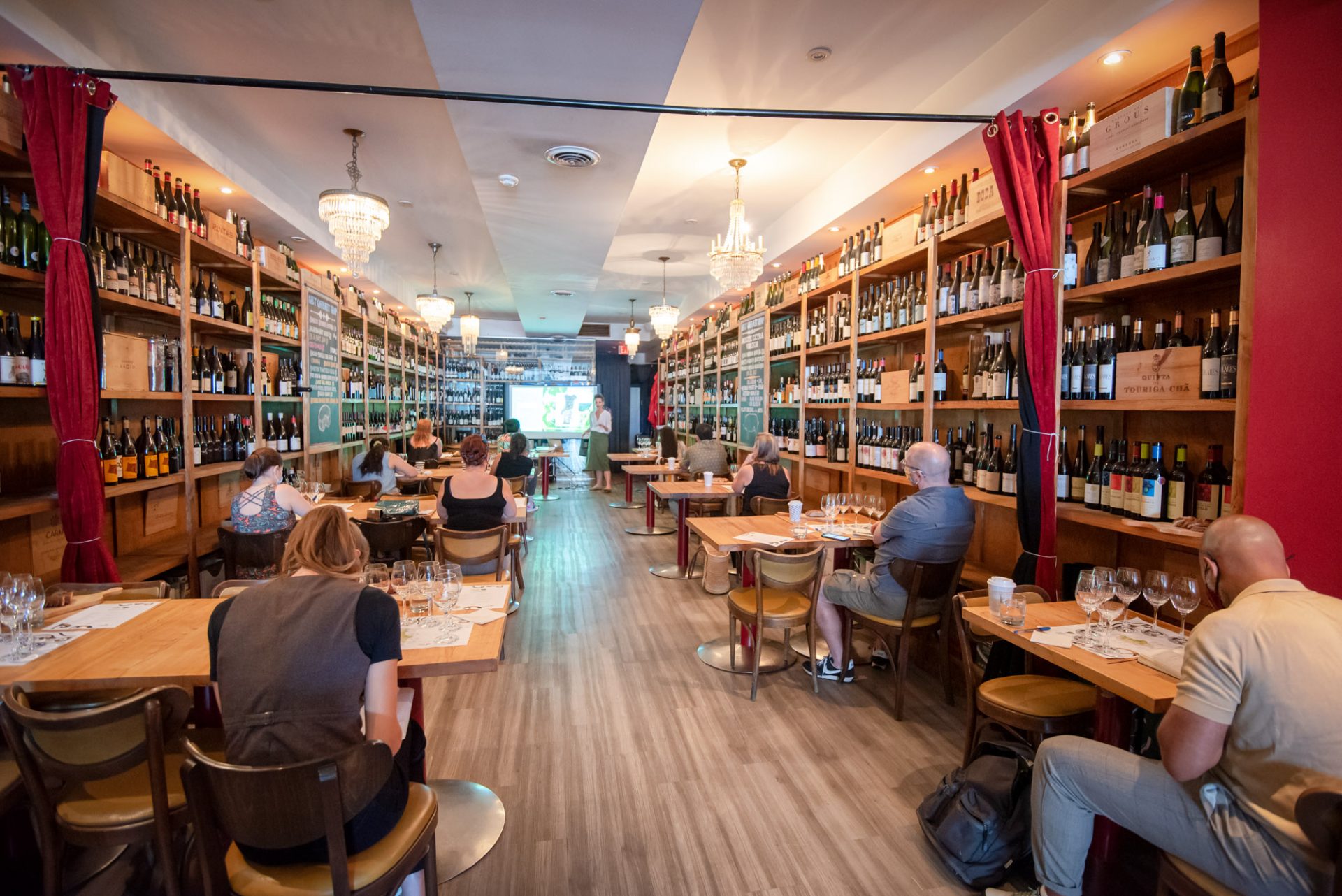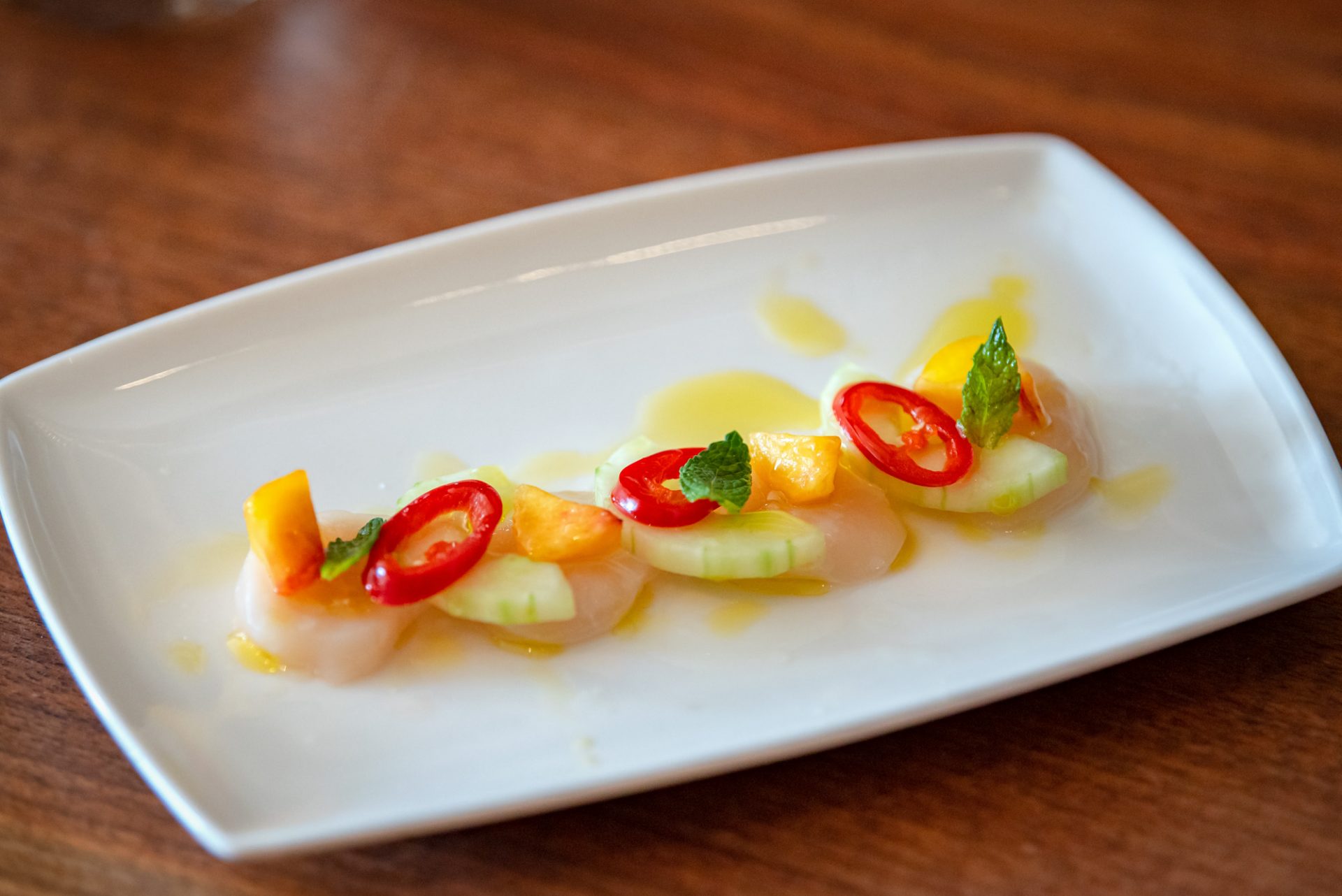
Photo credits: Nick Wons
When I received an invitation to cover a tasting of Portuguese wines from Vinho Verde at the acclaimed Salt Wine Bar in Little Portugal, I stood up with so much force it launched my chair halfway across the room. Over the hot summer months, I had been infatuated with the fresh, crisp wines of Vinho Verde, so this assignment seemed perfect.
There’s something intangible and compelling about the wine of Vinho Verde, maybe it’s the name which conjures up images of ripe green clusters of grapes, swelling on their vines in the Portuguese sun, the mystique of unique and native grape varietals, or the excellent value which lets me actually buy enough of them to keep up with my thirst.
My only problem is it seems that a great many of these wines are difficult to find, and poorly represented. Walk into your local LCBO, and you’re most like to find the fizzy $10 Vinho Verde most consumers associate with the region, and for a long time, it was all I knew myself. I was just waking up to the incredible wines the region could offer, and their excellent place beside fresh hot-weather foods.
Approaching the event, I ran myself down at work, piling on the hours, to the point of getting sick and requiring a (thankfully negative) COVID test. The day of the tasting, I awoke with my throat feeling as if I’d eaten gravel the night before, my right nostril completely blocked. Not only was I terrified of my first real professional tasting, and how I’d be received by real industry veterans, but now I was unsure if I could attend at all. Cue panic.
Thankfully, all my fears were alleviated by the wonderful sommelier and event organizer Elizabeth Luzza, who accommodated me to taste the wines outside on their lovely patio, separate from the group, in order to ensure the comfort and safety of all attending.
Terrified in case I was to discover I had lost my sense of smell, I lifted the first glass to my nose and… magic!

Wonderful complexity floated out of the Morgado da Vila Pét-Nat 2018 from Quinta da Lixa, a bubbly blend of Alvarinho and Loureiro from the Northwestern Minho appellation, a land of massive, rolling hills, and (as of today) the birthplace of my favourite Vinho Verde wines. Aromas of classic Pét-Nat barnyard funk, slightly pickled apples, bright orchard fruit, and elderflower.
The body was creamy and dry, reminiscent of some Normandy ciders, leading into a slightly bitter finish. This was the perfect wine to start the tasting off with. The only effervescent wine on the roster, it belayed all my expectations of what Vinho Verde’s sparkling wines could offer. In fact I tasted it with such gusto, I had to have it topped up to try it with its pairing, Jamon Serrano Montadito with whipped goat cheese and preserved figs. A very fun wine to place alongside a cheese board or appetizers.
The next glass took me into familiar territory, but with unfamiliar grapes. A smorgasbord of a blend, with Pedernã, Avesso, Azal, Alvarinho, Loureiro, and Trajadura, the Quinta de Simaens Borges 2020 was a fresh and floral number, boasting the highest acidity of the entire flight. Crunchy lime and under-ripe clementine blended perfectly with the second dish (still dreaming of this one) Hokkaido Scallop Crudo with Ontario peaches, cucumber, lime, mint, and red chili. The sessionable 11.5% of this wine really makes it a best friend to spicy, bright dishes.

I was happy to see next a wine I’d had before, one of the few still bottles of Vinho Verde offered at my local LCBO, The Aveleda Loureiro and Alvarinho 2020. I was excited to see how it stacked up next to the other wines on offer. The wine presented leafy herbs, lychee, and passionfruit, ending in some nice citrus and salinity on the finish. As the tasting went on, the wine actually grew on me as it warmed up in the summer sun. A nice compliment to the bright tangy goat cheese in the chickpea salad.
I drifted from one glass to the next, each offering its own particular nuances. The Adega Ponte de Lima, Loureiro Reserva 2019 stood out with its rich mouthfeel and long finish, presenting Loureiro in a way I had never tasted before.
The Quinta da Raza Avesso 2019, hailing from the Basto region, is the most inland region in all of Vinho Verde, with high altitude vineyards and intense weather. The wine sprung from the glass with white flowers, chamomile, sour mango, and apricot. It had great tension and length, nice weight in the mouth, granite salinity. This was my first time trying Avesso as a single varietal wine, and mark me as impressed. Fantastic with the scallops, I’ll be on the lookout for more.

When I brought the final wine to my face, I shot back, shocked. WOAH. This was really something. The Soalheiro Alvarinho Primeiras Vinhas 2020, vividly aromatic with all kinds of melon, summer flowers, spun sugar, fresh cut grass, nectarine, and a wonderful and pure lemon zest. Great acidity, very dry, with the long saline minerality that defines Vinho Verdes granite soils.
I was so enamoured with it that I barely noticed Treve Ring, our Vinho Verde presenter, had come out personally to give some answers to my curiosities. She told me how Soalheiro was grown from old vines, first planted in 1974. It hails from Monçao and Melgaço, situated in the northeastern point of Vinho Verde, a region nestled around the Minho river, and could age for up to 10 years (which I’ll have a seriously hard time waiting for when I get a bottle in my own cellar). It held up amazingly to the powerful flavours of the final dish, Risotto del Mar with Argentine Shrimp, calamari, chorizo Iberico, peas, piquillo peppers, and saffron rice, an absolute showstopper from the talented hands at Salt. If you want a case of your own, Soalheiro wines are available from FWP imports.

As I ate, attending Sommelier Christopher Sealy came outside out to have a chat with me on the patio about the tasting experience over our risotto. I’d not expected to have a chance to talk to anyone else that day, and it was at that moment that I realized something. I had started that day with two misconceptions, one about Vinho Verde, and the other about the wine community at large. When I first got into the wine industry, I dreaded working with snobby and inclusive people who would try their hardest to keep me out, but I’m embarrassed to report the exact opposite.
They showed me nothing but warmth. An extra special thank you to Salt’s own GM and Sommelier Phillip Carneiro who checked on me and introduced several of the wines and dishes to me, as well as offering me a top up of any wines I wanted (an offer I accepted with little shame or hesitation). I’ve only really come to appreciate the wine community after getting into it, rather than looking at it from the outside, and I feel the same way about Vinho Verde. The region has so much to offer, and it’s barely begun to realize its full potential. Its winemakers continue to experiment and develop fantastic wines, many of them organic and biodynamic, from native grape varieties. To see how much Vinho Verde can offer, one only has to open their mind, and a few bottles.








